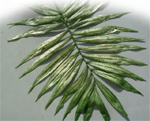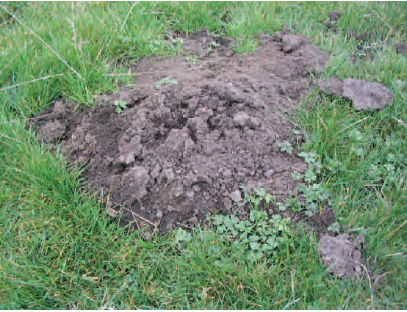Mammal pests
Content
A small selection of important mammal pests is included here. The rabbit (Oryctolagus cuniculus) The rabbit is common in most countries of central and southern Europe. It came to Britain around the eleventh century with the Normans, and became an established pest in the nineteenth century. Damage: The rabbit may consume 0.5 kg of plant food per day. Young turf and cereal crops are the worst affected, particularly winter varieties that, in the seedling stage, may be almost completely destroyed. Rabbits may move from cereal crops to horticultural holdings. Stems of top fruit may be ring barked by rabbits, particularly in early spring when other food is scarce. Vegetables and recently planted garden-border plants are a common target for the pest, and fine turf on golf courses may be damaged, thus allowing lawn weeds, e.g. yarrow, to become established. Life cycle: The rabbit’s high reproductive ability enables it to maintain high populations even when continued control methods are in operation. The doe, weighing about 1 kg, can reproduce within a year of its birth, and may have three to five litters of three to six young ones in 1 year, commonly in the months of February to July. The young are blind and naked at birth, but emerge from the underground ‘maternal’ nest after only a few weeks to find their own food. Large burrow systems (warrens), penetrating as deep as 3 m in sandy soils, may contain as many as 100 rabbits. Escape or bolt holes running off from the main burrow system allow the rabbit to escape from predators. Control: Rabbit control is, by law, the responsibility of the land owner. Preventative measures, available to both amateur and professional horticulturists are effective. Wire fencing, with the base 30 cm underground and facing outwards, represents an effective barrier to the pest, while thick plastic sheet guards are commonly coiled round the base of exposed young trees (see Figure 16.2). Repellant chemicals, e.g. aluminium ammonium sulphate, may be sprayed on bedding displays and young trees. Small spring traps placed in the rabbit hole, winter ferreting or long nets placed at the corner of a field to catch herded rabbits are methods used as curative control. Shotguns are used on large horticultural holdings by holders of gun licences. Gassing is an effective method, but must be applied only by trained operators. Crystals of powdered sodium cyanide are introduced into the holes of warrens by means of long-handled spoons or by power operated machines. On contact with moisture hydrocyanic acid is released as a gas and, in well-blocked warrens, the rabbits are quickly killed. Care is required in the storage and use of powdered cyanide, where an antidote , amyl nitrite, should be readily available. Pest . A mammal, bird, insect, mite or nematode that is damaging to plants. Myxamatosis, a flea-borne virus disease of the rabbit, causing a swollen head and eyes, was introduced into Britain in 1953, and within a few years greatly reduced the rabbit population. The development of weaker virus strains, and the increase in rabbit resistance, has combined to reduce this disease’s effectiveness in control, although its importance in any one area is constantly fluctuating. The brown rat (Rattus norvegicus) The brown rat, also called the common rat, is well known by its darkbrown colour, blunt nose, short ears and long, scaly tail. Damage: Its diet is varied; it will eat seeds, succulent stems, bulbs and tubers, and may grind its teeth down to size by the unlikely act of gnawing at plastic piping and electric cables. A rat’s average annual food intake may reach 50 kg, a large amount for an animal weighing only about 300g. Life cycle: This species has considerable reproductive powers. The female may begin to breed at 8 weeks of age, producing an average of six litters of six young ones per year. Its unpopular image is further increased by its habit of fouling the food it eats, and by the potentially lethal human bacterium causing Weil’s disease, which it transmits through its urine. Control: Amateur gardeners are able to use products containing aluminium ammonium sulphate to deter rats. Sonic devices are sometimes used to disturb the animal and provide a round-the-clock deterrent. Baiting with rat poison should be performed by trained operatives. This method is best achieved by a preliminary survey of rat numbers in buildings and fields of the horticultural holding, and by the identification of the ‘rat-runs’ along which the animals travel. Baits containing a mixture of anticoagulant poison and food material such as oatmeal are placed near the runs, inside a container that, while attracting the rat, prevents access by children and pets. Drainage tiles or oil drums drilled with a small rat-sized hole often serve this purpose. The poison, e.g. difenacoum, takes about three days to kill the rat and, since the other rats do not associate the rat’s death with the chemical, the whole family may be controlled. The bait should be placed wherever there are signs of rat activity, and repeated applications every three days for a period of three weeks should be effective. Strains of rat resistant to some anticoagulants are found in some areas, and a range of chemicals may need to be tried before successful control is achieved. The poison, when not in use, should be safely stored away from children and pets. Dead rats should be burnt to avoid poisoning of other animals. The grey squirrel (Sciurus carolinensis) This attractive-looking 45 cm long creature was introduced into Britain in the late nineteenth century, at a time when the red squirrel population was suffering from disease. The grey squirrel became dominant in most areas, with the red squirrel surviving in isolated areas such as the Isle of Wight. Damage: The horticultural damage caused by grey squirrels varies with each season. In spring, germinating bulbs may be eaten, and the bark of many tree species stripped off (see ring barking). In summer, pears, plums and peas may suffer. Autumn provides a large wild food source, although apples and potatoes may be damaged. In winter, little damage is done. Fields next to wooded areas are clearly prone to squirrel damage. Life cycle: Squirrels most commonly produce two litters of three young ones from March to June, in twig platforms (dreys) high in the trees. The female may become pregnant at an early age (6 months). As the squirrels have few natural enemies, and this species lives high above ground, control is difficult. Control: Amateur and Professional horticulturists may need to reduce grey squirrel numbers. During the months of April–July, when most damage is seen, cage traps containing desirable food, e.g. maize seed, reduce the squirrel population to less damaging levels. Spring traps placed in natural or artificial tunnels achieve rapid results at this time of year if placed where the squirrel moves. Professional horticulturists are able to use poisoned bait containing a formulation of anticoagulant chemical, e.g. warfarin, when placed in a well-designed ground-level hopper (one hopper per 3ha). This can achieve successful squirrel control without affecting other small wild mammal numbers. In winter and early spring, the destruction of squirrel nests by means of long poles may achieve some success.
The mole (Talpa europea) The mole is found in all parts of the British Isles except Ireland. Damage: This dark-grey, 15 cm long mammal, weighing about 90 g, uses its shovel-shaped feet to create an underground system 5–20 cm deep and up to 0.25 ha in extent. The tunnel contents are excavated into mole hills (see Figure 14.2). The resulting root disturbance to grassland and other crops causes wilting, and may result in serious losses. Life cycle: In its dark environment, the solitary mole moves, actively searching for earthworms, slugs, millipedes and insects. About 5 hours of activity is followed by about 3 hours of rest. Only in spring do males and females meet. In June, one litter of two to seven young ones are born in a grass-lined underground nest, often located underneath a dense thicket. Young moles often move above ground, reach maturity at about 4 months, and live for about 4 years. Control: Natural predators of the mole include tawny owls, weasels and foxes. The main control methods are trapping and poison baiting, usually carried out between October and April, when tunnelling is closer to the surface. Amateur or Professional horticulturalists can use pincer or half barrel traps placed in fresh tunnels and inserted carefully so as not to greatly change the tunnel diameter. The soil must be replaced so that the mole sees no light from its position in the tunnel. The mole enters the trap, is caught and starves to death. In serious mole infestations, trained operators use strychnine salts mixed with earthworms at the rate of 2 g ingredient per 100 worms. Single worms are carefully inserted into inhabited tunnels at the rate of 25 worms per hectare. DEFRA authority is required before purchasing strychnine, a highly dangerous chemical, which must be stored with care. Deer Deer may become pests in land adjoining woodland where they hide. Muntjac and roe deer ring-bark trees and eat succulent crops. High fences and regular shooting may be used in their control. |
|||||||||||||||||||






